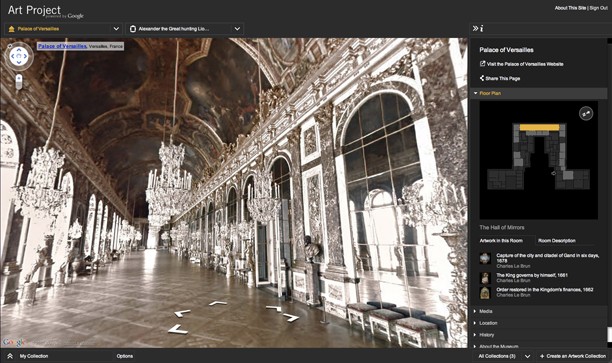If you were to stand inches away from the surface of Van Gogh’s Le Berceuse at the Museum of Fine Arts in Boston, you would see the thick masterful strokes and the deep opulent colors, which looks at though it has never quite dried. The urge to touch the painting and assure yourself that the painting is in fact solid is almost overpowering.
This is the downfall to Google’s Art Project: the moment when you remember you are in front of a computer screen.
Introduced in February 2011 by founder Amit Sood in London, the Google Art Project allows viewers online accessibility to artworks in major museums across the globe. Digitizing paintings, sketches, archeological artifacts and major collections worldwide, the progressive site is a virtual database for high quality museum tours.
Equipping the same technology used for Google Street View, the project allows viewers to immerse themselves in high resolution replications of more than 30,000 pieces of art. The database is extensive, explorative and educational.
Gizmodo, a tech publication, said that the seven billion pixel resolution of the converted artworks offers viewers an optimal experience compared to viewing an artwork in person.
It does not, however, offer the visceral and physical sense of a piece. Criticisms of the Art Project emphasize the immaterial quality that digital art is invoking online. Removing the viewer from the museum setting possibly disengages the person from an immersion into an active art experience.
The Google Art Project’s intention is to “preserve and promote culture online.” It is, in a sense, quite possibly the frontier of expanding art culture in its accessibility and medium. Before the Art Project’s release, museums had remained relatively unscathed by the evolving online social culture, insular in their institutional identity.
However, since the project’s re-launch in the past year, Art Project has amassed works from 151 acclaimed art partners, providing partial and entire tours of museums in more than 40 countries. What was initially an incomprehensive collection of art from 17 international museums has expanded exponentially in three years.
Questions remain as to whether this innovative online museum exploration will transcend modern institutional values.
Comprehensive information pertaining to each artwork is provided on the website and is similar to the description of a painting that you could read in a museum. The website has been designed to allow users a mock museum experience, with the technology to create a user profile and curate one’s own collection of work. It has essentially transformed an archaic entertainment and cultural facet into an interactive, social medium.
A virtual nirvana for art enthusiasts, students and art novices, the project houses the world’s greatest work for cohesive viewing. No longer is art an exclusive experience for the affluent museum buff. Finally, Claude Monet’s The Water Lilies — Morning at the Musée de l’Orangerie in Paris is available for high quality viewing from the screen of a laptop.









